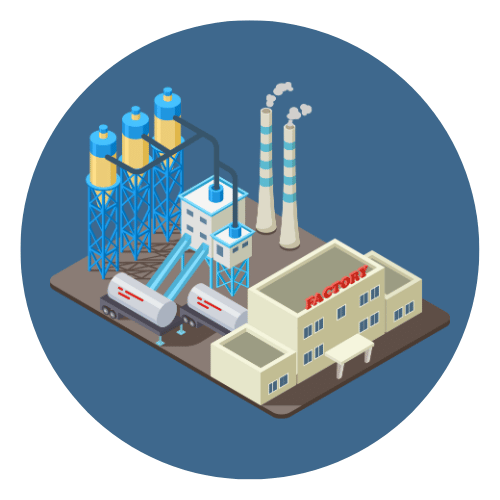What is the difference between 316 and 304 stainless steel ?

Contents1 What Is Corrosion?2 The Science Behind Corrosion2.1 1. Electrochemical Basis of Corrosion2.2 2. Role of the Electrochemical Cell2.3 3. Thermodynamics and Kinetics of Corrosion2.4 4. Types of Corrosion Reactions2.5 5. Passivation3 Common Types of Corrosion3.1 3.1 Uniform Corrosion3.2 3.2 Galvanic Corrosion3.3 3.3 Pitting Corrosion3.4 3.4 Crevice Corrosion3.5 3.5 Intergranular Corrosion3.6 3.6 Stress Corrosion Cracking […]

Contents1 1. What Is Stress Corrosion Cracking?1.1 Key Characteristics of Stress Corrosion Cracking:1.2 Why It’s Dangerous:1.3 Examples of SCC Environments and Materials:2 2. Fundamental Concepts of Stress Corrosion Cracking2.1 2.1 The Definition of Stress Corrosion Cracking2.2 2.2 The Electrochemical Nature of SCC2.3 2.3 Crack Propagation Mechanisms2.4 2.4 Distinguishing SCC from Other Failure Modes2.5 2.5 Importance […]

Contents1 1. What is Electrolytic Corrosion?1.1 ✅ Key Characteristics of Electrolytic Corrosion:1.2 🔁 How Electrolytic Corrosion Works (Simplified):2 2. The Science Behind Electrolytic Corrosion2.1 2.1 Electrochemical Basics2.2 2.2 Key Reactions in Electrolytic Corrosion2.3 2.3 Sources of Electrical Current2.4 2.4 Difference Between Electrolytic and Galvanic Corrosion2.5 2.5 Conditions Favoring Electrolytic Corrosion2.6 2.6 Rate of Corrosion3 3. […]

Contents1 1.What Is Galvanic Corrosion?1.1 How Does It Work?1.2 Examples of Galvanic Corrosion1.3 Key Conditions Required2 2. The Electrochemical Principles Behind Galvanic Corrosion2.1 2.1 Formation of a Galvanic Cell2.2 2.2 Anode and Cathode Reactions2.3 2.3 Role of Electrolytes2.4 2.4 Electrode Potential and the Galvanic Series2.5 2.5 Surface Area Ratio Effect2.6 2.6 Key Conditions for Galvanic […]

Contents1 What is Galvanized Steel?1.1 The Galvanization Process1.2 Key Characteristics of Galvanized Steel1.3 Common Uses of Galvanized Steel2 What is Stainless Steel?2.1 Common Grades of Stainless Steel2.2 Key Characteristics of Stainless Steel2.3 Common Uses of Stainless Steel3 Composition and Structure Comparison3.1 Galvanized Steel Composition3.2 Stainless Steel Composition3.3 Key Structural Differences3.4 Implication of Differences4 Corrosion Resistance4.1 […]

Contents1 I. Understanding kPa and psi1.1 What is kPa?1.2 What is psi?1.2.1 Comparison and Usage2 II. The kPa to psi Conversion Formula2.0.1 Formula for Converting kPa to psi2.0.2 Formula for Converting psi to kPa2.0.3 Why This Conversion Matters3 III. Step-by-Step Conversion Example3.0.1 Example 1: Converting kPa to psi3.0.2 Example 2: Converting psi to kPa4 IV. […]

Contents1 I. What is Bar?1.1 Relation to Other Pressure Units1.2 Common Uses of Bar2 II. What is PSI?2.1 Relation to Other Pressure Units2.2 Common Uses of PSI2.3 Why PSI is Important3 III. The Pressure Bar to PSI Conversion Formula3.1 The Formula:3.2 Example Calculations:3.3 Inverse Conversion (PSI to Bar)3.4 Practical Applications:4 IV. How to Convert Bar […]

Contents1 I. What is an Inverted Flare Thread?2 II. Understanding the Mating Fittings2.1 Key Features of Mating Fittings:2.2 Importance of Correct Fitting Selection:3 III. What Fitting Mates with an Inverted Flare Thread ?3.0.1 1. Inverted Flare Fittings3.0.2 2. Double Flare Fittings3.0.3 3. Adapters3.0.4 4. Tees, Elbows, and Unions3.0.5 5. Reducer Fittings4 IV. How to Properly […]

Contents1 I. What is MPA?2 II. What is PSI?3 III. The Relationship Between MPA and PSI3.0.1 Conversion Formula3.0.2 How the Conversion is Derived3.0.3 Example Calculation3.0.4 Why Converting Between MPA and PSI is Important4 IV . How to Convert MPA to PSI4.0.1 Step-by-Step Guide to Converting MPA to PSI:4.0.2 Example Conversion:4.0.3 Another Example for Higher Values:4.0.4 […]

Contents0.0.1 1 I. What is a power plant ?1.1 Key Functions of a Power Plant:1.2 Importance of Power Plants:2 II. Types of Power Plants2.1 1. Thermal Power Plants2.2 2. Hydroelectric Power Plants2.2.1 2.3 3. Nuclear Power Plants2.3.1 2.4 4. Solar Power Plants2.4.1 2.4.2 5. Wind Power Plants2.4.3 6. Biomass Power Plants3 III. How Power Plants […]


 Automation System
Automation System  Energy Engineeing
Energy Engineeing  Instrumentation System
Instrumentation System  Mechanical Engineeing
Mechanical Engineeing  Piping Technologies
Piping Technologies  Transportations
Transportations  Manufacturing
Manufacturing  Training Material
Training Material 
